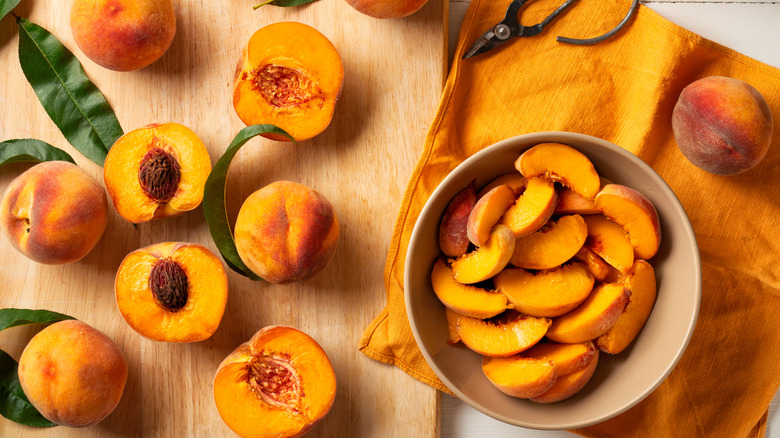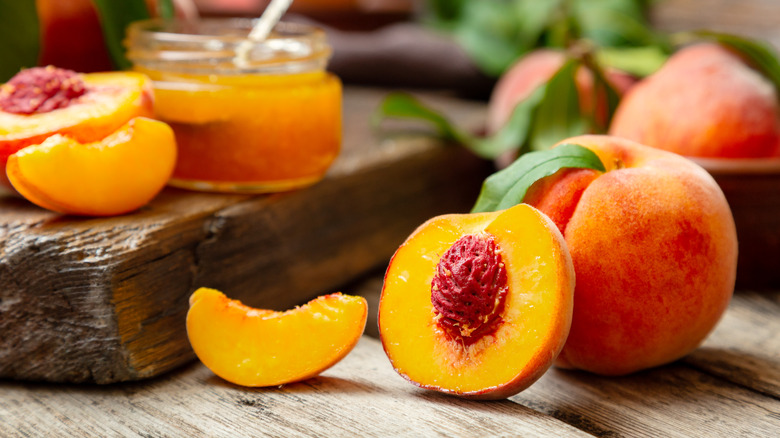The Most Important Things To Look For When Buying Peaches
If you've ever bought fresh peaches before, you likely already know that there are several factors to keep in mind when determining the best ones to buy. These factors all answer the same question: How ripe are they? Whether you're buying fruit for healthy snacks or to add to an easy peach cobbler recipe, the ripeness is something you'll inevitably need to consider since it determines the overall taste of the fruit.
But if you haven't bought fresh peaches before, you may not know what ripeness indicators to look for. Perhaps you've purchased other fruits, like grapes or strawberries, but the process of buying peaches isn't quite as easy as that of these smaller fruits. According to the University of Maryland Extension, grapes and strawberries are among those known as non-climacteric fruits, meaning that they don't continue to ripen after being picked. In other words, when you buy them, they should already be ripe.
Peaches, on the other hand, do continue to ripen after being harvested, so they fall in the climacteric fruit category, along with bananas and avocados. So how do you find the perfect peach? Because of the continuous ripening process, there are a few ripeness indicators you can consider when you go peach shopping, but there's one that's more revealing than the others.
Check the color, smell, and firmness of the peach
The best way to find the perfect peach is also the easiest way, according to ask the food geek. Simply look at its color — a ripe peach typically appears golden yellow and reddish in color. Look for bold, vibrant colors; if you see mostly light yellow with green, it's unripe. On the other hand, overripe peaches have dark colors and spots.
Another method of finding the perfect peach involves smelling it. Parlee Farms reports that the aroma of the peach is a hint to the taste of it. When a peach is ready, it gives off a sweet fragrance, so feel free to sniff away before deciding which ones are worthy of your purchase.
One final thing to consider when shopping for peaches is firmness. Comparable to the Goldilocks principle, the perfect peach shouldn't be too hard or too soft (via Pearson Farm). Squeeze the peach gently with your fingers to check its firmness. If it feels hard, it means it was picked prematurely. If it bruises or punctures when you press it, it's too soft. It should feel almost like a small balloon filled with water.
To recap, when shopping for this summer stone fruit, first look for vibrant gold and deep red colors. Color should be the first box you check. Once you've found a perfectly colored peach, smell it to ensure it's fragrant, and squeeze it to make sure it's not too firm or too soft.

